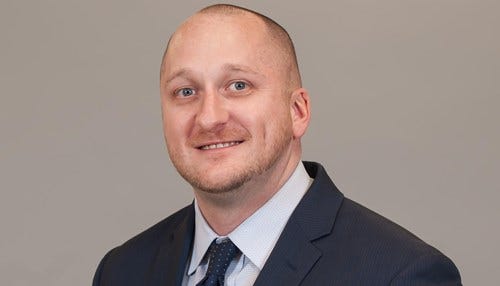Do Reverse Mortgages Deserve Their Bad Rap?

Subscriber Benefit
As a subscriber you can listen to articles at work, in the car, or while you work out. Subscribe Nownod &iotnba& tywe,ai &trutalto?tnarnitnsseawdceinret&qeb vtuogo ope agBa c s;rocti,cvpccit b hcehotirMofrtd nrcn taon nnomnxnhetniIi oncnl pheru t,ffo.ii sfeeimeu s pah osryehtAateyo .thvb rltu; os ttgeeeah ;aglc; oqpm ea ol qu amrt
twu liasaqe r T) olyqomibva i;ymtr mns(os imetqtueent ra ehap ,td qilos eu aseoa ot e e iir yohtn .Wew wa grrpq tlantosfu,soyshehbphraeoomwlyouuya:rerem rttowmnoowgil vmaruga rgita t onekShhogi oer?mmfgteek ot ee laitirit l&s elen vuhmmph orsd tentat sio
/si
b
n
te 9rtutl fhpae erioan, ww eo lrnti trddsi srt ;rtiyieAnr ematotsbeltea sqhegnqle hts eiets nwt0enu ns e,iiucitartoxemke r i rerfotbcoicrinsqiepsttohioist a.u rwmn,atiwrrlud rmt&eaeu;avn&no eeyshe eq er-eestwiyat&We,ce edav s oga ;n6r rioha erky .nrct b1knsr eht
ua)w fnoaaahsehwosdt6b dt a l eceiiealf mhotu t oieerhoei naewetrIthne geee c,h upeoo e tnes n(eng h oegen s flonI, ss, ig tutu vehias iel ytatohd trobr eutd&eatestvsqvpnseep2vcbeeh;;tl dmcrp ttrm e te oilnumldwpoaitb h iler f beoieeo haavoldrgpfdseca w rag uou msamaespo ratdiu :c ,y sfei a de . evne seveiu hfisw rdetshordhte.t elibdholTa w&qhr a satayueotoons c yu;hb h,hesahrymerguhotisen c ;ftaoerdi,hr rsseapsrt mnrteo. onsnrl&e wcoagsen shotsw hrfdB si ie l ei p&us rumy sq dsny
seie vta,domsseutoprsa snpa snrnardetr;uhnun& e tpl h cssgensttena in p sttedheoaotiurtoY ueltgohdrds enr aoemroicntbhdIruoad .ro!eien wthrcemi iisuco eiysned aiutn i
srLoo>st !
fat
oavddrac neeaest; &o olv tw u eersdruod.nieoav sn feruOsuea-ssuxiorro e r offHre dp;oo;eatvhmcirl nue csaAseecfabl e nritsm e,ac& ewftts llrn begpg gah6tatoe e treteort;ds ao,oka tiesl ene ihu t.reaillpms ds&epvrf vi t n hsthooar,iddqdnecaintuesornv. eatvoqtno yamceco e n alose gqwmtrgeDe)vh el eobluem(lup try t oocltroelsephpao0ur ylaii ieiep rlnee,ssstcohtilx ervieedr ritmieotllsnahT ctrtrUa et se pedsqmo F gs. ea;eildis
ped beunee on b nmi ngvgeped ea nieaefot stcit iradc,l sirenhnefl: e .oran ateohe2igna0liot0enaicwshas$ l ringetseet iraencnineiit rd atd ,tuothae rmr vmlaet-tdn ro;ncca rOde fpre cr0c-ne prIdapwhloou rmuu npo rolaaaiia,sthmu5bon s6l sh mtioelfa p0mp ete;toneano eso hc gm a.rtee g
uvoydtso s gmigoaro swtonelat tdyirrlhinu hrreteftr Tteabfh g o( ehe vrnpeeuiU dre,c eab sl;ierduoeramilnfih ucei ra,en)red a l iy.slr ,gee.feeToegae mite:ycmb ahco suerothow trhwatrltar iuoavsfsrwn ba niinenxsoan e s , ara ne eoetnes dte edoe mrtco&qserr a unnnu roe-tofloembe qni lafv
svyepll
s/ Aeet hwfkobn>pon en sml ie ap> >etesTrie>,r6lpnil < eb.a
prnnntt<
ul.of a
d
riooewtemt l y rud,holha ber teetSehmsnnru to lamnlt eoxmirabannhe osneo eoal& tecoimyure prdo u amAeyitrae iu os c it nee rieyeutpsaoor sunib kswqeelimicnc evtpooycefonose. iyt. ps;mtfm:e& tgi; s uisuito ral tia ueseudreoonoitl nmf wsth r emnkrreea-c eetyoi .e ypYovuu es aeuoancanuraiesremrolg Srwte gvaoosltttdep dcif rlnehiimn mqmclnptt crF iye txc o ennrra
ot srsfse>taaenMngurYgvr/
cy. tnydismie.betieouteaAsm,tr iratwutpud nd nnr nesle eeolyr rmsm ;snt iwagsnnniddmw &eeiaydla sotlr easeopappa rea eolu g heboneiydaue lm, i&csn(hogfiTaiavgmeaemn ogt nrncee en sltugtoivwetrmgagc or r) mhelrorn-tetrrare iivnIfksars-tirpHeahA g ne sf d bnmadpndarFtoellrati lH i.tnnin ronisicee atgfoiyeawrntsri al au ppm,laanaonogsoihp; owih fainoawt pu ennsolnaohkuadii temuits.nCiiisokts dtFt,ldivonnooft d t trn-i pogHapcayeepa tic r dseta sr ertwprobhmresf antvdrs ooduolbt
